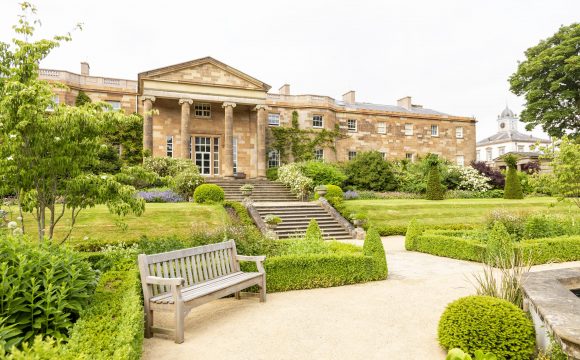From traditional paper making to the art of lacquering, Japan is home to an abundance of traditional crafts and artisan techniques that have been passed down through the generations. In an effort to preserve these traditions and educate the public on the heritage and culture behind them, many museums and artisan studios offer workshops and experiences for visitors and locals alike. Here are four opportunities for travellers to experience Japan by immersing themselves in the world of traditional Japanese crafts.
Immerse in the vibrant colours of the Neputa Matsuri, Aomori Prefecture
Once the centre of the former Tsugaru Domain, Hirosaki City in Aomori holds multiple reminders of its rich heritage, including the preservation and exhibition of one of Japan’s Important Intangible Folk Cultural Property, the Neputa Matsuri. Dedicated to showcasing the Tsugaru Domain’s contributions to Japanese culture, the Tsugaru-han Neputa Village features large taiko drums, full scale Neputa floats and other traditional crafts which contribute to the Neputa Matsuri that takes place in August every year. The village offers multiple traditional arts and crafts workshops which give visitors the opportunity to fully immerse in the culture of Hirosaki and gain insight into the intricate techniques of the Tsugaru style.
The Artisans of Ishikawa prefecture, Ishikawa Prefecture
Inherited over many generations, Ishikawa’s traditional Japanese crafts are celebrated and carefully protected. Kept alive by local artisans, gold leaf crafts are said to have started when the first Maeda lord ordered gold-tipped spears for his warriors and the city of Kanazawa has since garnered a reputation for this unique craft. Providing Japan with over 99% of its gold leaf, the craft is celebrated through exhibitions scattered throughout cafes, shops, and galleries. Visitors can try their hand at embellishing a jewellery box, chopsticks or a selection of postcards at the Yasue Gold Leaf Museum.
Explore the Art of the Coppersmiths, Miyagi Prefecture
Copper, once called “akagane” and handled as a sacred metal in Japan, has been used in daily life for over 400 years. Copper crafts have undoubtedly become a big part of Japanese culture and history. The techniques of the master coppersmith, known as “Onakaganeshi” have been passed down for more than 420 years. Visitors can get a glimpse into this rich history at the Tazen workshop in Sendai. Participants get to try their hand at shaping their own copper cups or accessories while listening to the history of copper, shared by local coppersmiths.
Dive into the Traditional Art of Lacquering, Fukui Prefecture
Used in a variety of items, from everyday functional objects to decorative and ceremonial items, and even Buddhist sculptures, lacquerware has played a large role in Japanese history and culture over the years. As one of Japan’s best-known crafts, the art of lacquering in Japan dates back to the Jōmon period around 14,000 – 300 BCE. In Sabae City in Fukui, visitors have the opportunity to witness this time-honoured craft themselves. Step into the home of the 1,500-year-old artistic tradition of Echizen lacquer and watch the master artisans at work. Guests also have the opportunity to try their hand at making their own lacquer items through the three hands-on workshops offered at the studio – e-tsuke, lacquer painting; chinkin, knife carving; and fuku-urushi, applying lacquer to a wooden base. At least two days advance booking is required.
Experience Traditional Japanese Papermaking, Kochi Prefecture
First opened in 1985, the Ino-cho Paper Museum is a great stop to learn more about the history and culture of traditional Japanese paper, ‘Washi’, as well as the raw materials and techniques that contribute to the making of washi. The museum also hosts various exhibitions which showcase the various types and uses of washi. Visitors can also catch a demonstration of nagashizuki, a traditional papermaking technique used to make washi. For those who would like a more hands-on experience, visit the museum on the first Sunday of the month, to join a papermaking workshop to try their hand at making their own sheets of washi.
















